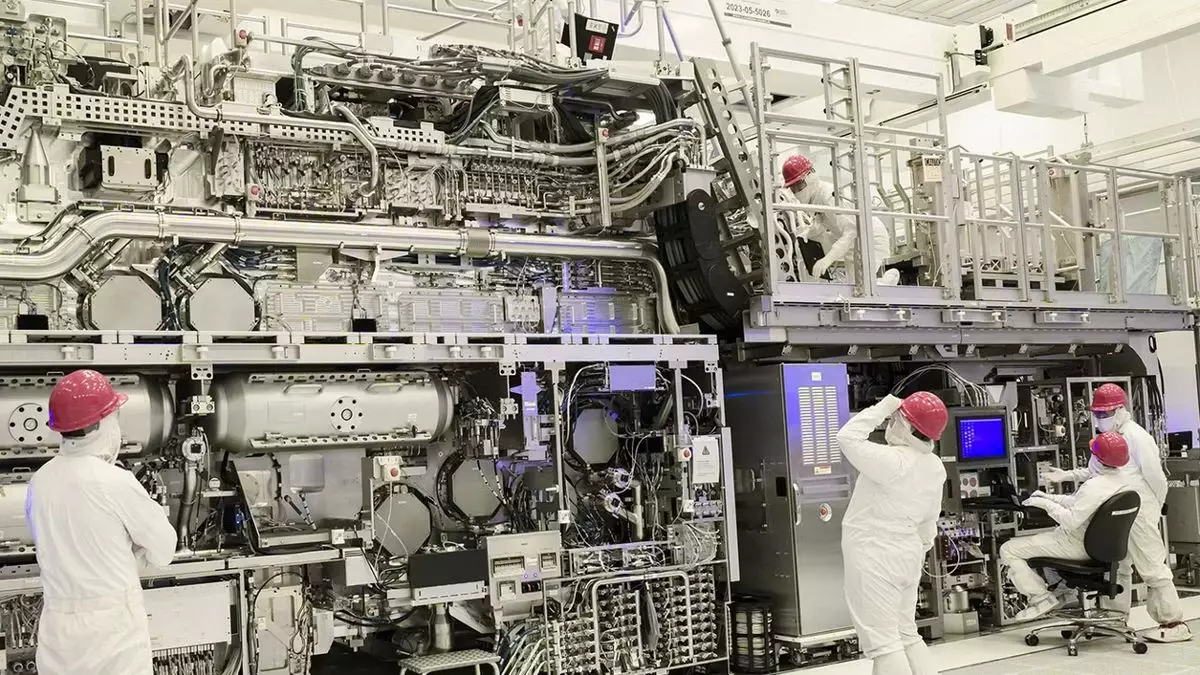Intel has sparked a new wave of discussion within the tech community with its announcement of readiness for the 18A production node. While the company touts this milestone as an important step forward, the implications for the broader landscape of computing and the firm itself remain quite mixed. This article critically examines Intel’s claims about the 18A node, its roadmap developments, and the competition it faces against the backdrop of an evolving semiconductor market.
The 18A node represents Intel’s latest attempt to refine its manufacturing processes as part of a larger strategy termed “5 Nodes in 4 Years” (5N4Y). The premise behind this ambitious initiative is to blur the lines between technology generations, promising an aggressive pace of innovation. The launch of 18A is particularly significant, as it is positioned to replace outdated processes and elevate performance benchmarks.
Intel’s web portal for 18A suggests that this node will usher in products with cutting-edge capabilities, featuring up to 15% better performance per watt, alongside a 30% increase in chip density compared to its predecessor, the Intel 3 node. However, as one delves deeper into these claims, it becomes evident that while the numbers are impressive on paper, they raise a few questions about the practical implications for Intel’s product releases and overall market competitiveness.
A key point of contention arises when examining Intel’s timeline for chip releases on the new 18A node. Although the company announces immediate readiness for customer projects and plans to kick off production with tape outs in early 2025, its own in-house offerings are not projected for launch until 2026. This remarkable delay begs the question: how genuinely ready is Intel’s 18A production node?
The Clearwater Forest server CPU, which Intel initially promised for release in 2025, has since been postponed to the first half of 2026, further undermining the confidence in the 18A timeline. Such shifts cast a shadow on the robustness of Intel’s claims about its new manufacturing technology and call into question the company’s ability to keep pace with its rivals, particularly as they continue to advance their own processes without such delays.
Evaluating the Competitive Landscape
As Intel navigates this critical juncture, it faces mounting challenges from established competitors like TSMC. The Taiwanese manufacturer has made significant strides in its own technology, including the highly anticipated N2 node, making it an industry standard for performance and efficiency. The fact that Intel’s manufacturing node may soon be less competitive in terms of gate density and SRAM efficiency highlights the precarious position the chip giant finds itself in.
Furthermore, while Intel touts the innovation of its PowerVia backside power delivery system, TSMC is not set to incorporate a similar technology until its A16 node, potentially allowing Intel to carve out a niche advantage in terms of chip design and power management. Nevertheless, the trajectory of TSMC’s success suggests that any gains Intel could achieve with 18A may still fall short of the bar set by its rival unless the node proves to be a substantial leap in performance.
Gelsinger’s bold assertion that he “bet the whole company on 18A” illustrates the immense pressure Intel faces. The semiconductor industry is notorious for its rapid evolution, and Intel’s faltering footing can translate into market repercussions with far-reaching consequences. As consumers and businesses adapt to increasingly robust technology demands, a failure to deliver on promises surrounding 18A could lead to fewer options—and ultimately higher costs—for consumers.
As Intel strives to reclaim a prominent position in the market, it is essential for the company to maintain a laser focus on delivering valuable innovations that genuinely reflect the promises made. Industry stakeholders eagerly await not just the launch of 18A-based devices but also the practical implications of their capabilities.
While the 18A production node holds promise, its successful implementation remains uncertain. Intel faces a dual-edged sword—on one side rests the opportunity to reclaim its leadership status through groundbreaking technology, while on the other side looms the risk of falling further behind its competitors. To truly evolve and stabilize its standing in the semiconductor landscape, Intel must deliver not just on the hype but with tangible products that meet the high expectations set forth by both the industry and the consumer base. As we look forward, hope remains, but skepticism lingers; Intel’s next moves will be critical in determining its future trajectory.

